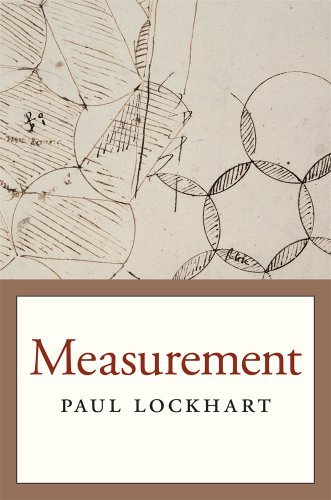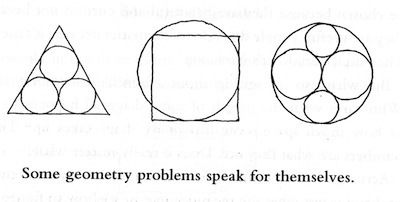What do you think?
Rate this book


Paperback
First published August 20, 2012
So no, I can't tell you how to do it, and I'm not going to hold your hand or give you a bunch of hints or solutions in the back of the book. If you paint a picture from your heart, there is no 'answer painting' on the back of the canvas. If you are working on a problem and you are stuck or in pain, then welcome to the club. We mathematicians don't know how to solve our problems either.

What about four-dimensional space? Is there such a thing? If we're asking whether four-dimensional space is real we might as well ask about three-dimensional space: Is there such a thing? I suppose it appears that there is. We're walking around (apparently), and things certainly look and feel as though they are part of a three-dimensional universe, but when you come right down to it, three-dimensional space is really an abstract mathematical object--inspired by our perception of reality, to be sure, but imaginary nonetheless. So I don't think we should put four-dimensional space in any special mystical category. Spaces come in all sorts of dimensions, and none are any more real than any other. There are no one-dimensional or two-dimensional spaces in real life, and the only thing that gives the number 3 any special status is that our senses appear to offer us that particular illusion.
A mathematical structure is what it is, and anything we discover about it is the truth. In particular, if we choose to model an imaginary curve or motion by a set of equations, we are not making any guesses or losing any information through oversimplification: our objects are already (for aesthetic reasons) as simple as they can be. There is no possibility of conflating reality and imagination if everything is imaginary in the first place.
The solution to a math problem is not a number; it's an argument, a proof. We're trying to create these little poems of pure reason. Of course, like any other form of poetry, we want our work to be beautiful as well as meaningful. Mathematics is the art of explanation, and consequently, it is difficult, frustrating, and deeply satisfying.
It's also a great philosophical exercise. We are capable of creating in our minds perfect imaginary objects, which then have perfect imaginary measurements. But can we get at them? There are truths out there. Do we have access to them? It's really a question about the limits of the human mind. What can we know? This is the real question at the heart of every mathematics problem.
So the point of making these measurements is to see if we can. We do it because it's a challenge and an adventure and because it's fun. We do it because we're curious, and we want to understand mathematical reality and the minds that can conceive it.